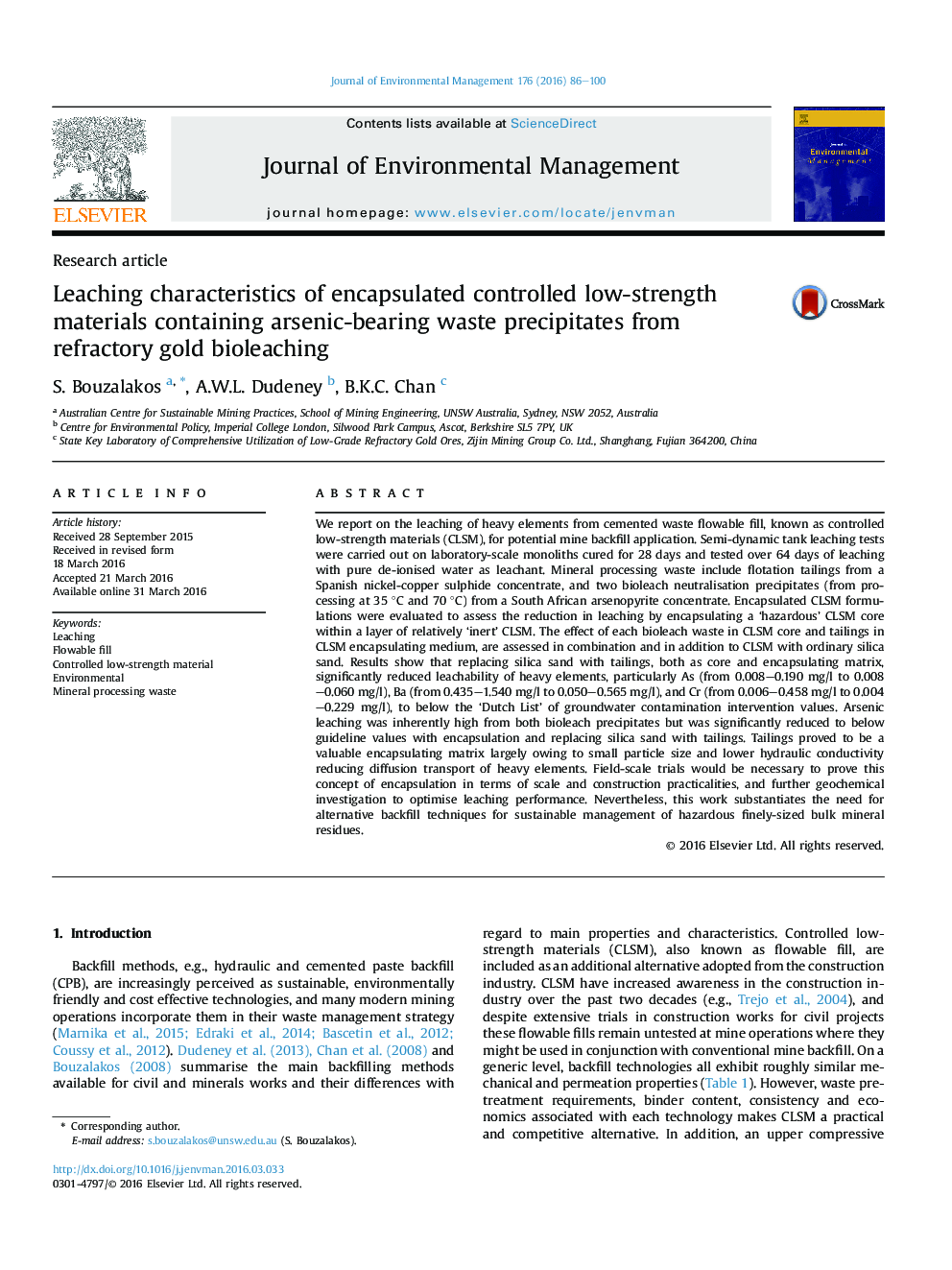| کد مقاله | کد نشریه | سال انتشار | مقاله انگلیسی | نسخه تمام متن |
|---|---|---|---|---|
| 1055331 | 1485236 | 2016 | 15 صفحه PDF | دانلود رایگان |
• Arsenic-bearing bioleach precipitates were used to formulate cement-based CLSM specimens.
• Encapsulation reduced leaching of heavy elements, including As, Ba and Cr, in CLSM specimens.
• Fine-sized tailings proved to reduce leaching when added to encapsulating matrix.
We report on the leaching of heavy elements from cemented waste flowable fill, known as controlled low-strength materials (CLSM), for potential mine backfill application. Semi-dynamic tank leaching tests were carried out on laboratory-scale monoliths cured for 28 days and tested over 64 days of leaching with pure de-ionised water as leachant. Mineral processing waste include flotation tailings from a Spanish nickel-copper sulphide concentrate, and two bioleach neutralisation precipitates (from processing at 35 °C and 70 °C) from a South African arsenopyrite concentrate. Encapsulated CLSM formulations were evaluated to assess the reduction in leaching by encapsulating a ‘hazardous’ CLSM core within a layer of relatively ‘inert’ CLSM. The effect of each bioleach waste in CLSM core and tailings in CLSM encapsulating medium, are assessed in combination and in addition to CLSM with ordinary silica sand. Results show that replacing silica sand with tailings, both as core and encapsulating matrix, significantly reduced leachability of heavy elements, particularly As (from 0.008–0.190 mg/l to 0.008–0.060 mg/l), Ba (from 0.435–1.540 mg/l to 0.050–0.565 mg/l), and Cr (from 0.006–0.458 mg/l to 0.004–0.229 mg/l), to below the ‘Dutch List’ of groundwater contamination intervention values. Arsenic leaching was inherently high from both bioleach precipitates but was significantly reduced to below guideline values with encapsulation and replacing silica sand with tailings. Tailings proved to be a valuable encapsulating matrix largely owing to small particle size and lower hydraulic conductivity reducing diffusion transport of heavy elements. Field-scale trials would be necessary to prove this concept of encapsulation in terms of scale and construction practicalities, and further geochemical investigation to optimise leaching performance. Nevertheless, this work substantiates the need for alternative backfill techniques for sustainable management of hazardous finely-sized bulk mineral residues.
Journal: Journal of Environmental Management - Volume 176, 1 July 2016, Pages 86–100
